Fujifilm Instax SQUARE SQ10 Review:
Instant film is very popular, and with good reason; at least for me, it can be a nice change from the “perfection” of digital. With an instant film camera, you’re getting a tangible print with all the little imperfections that are often associated with this type of device. Fujifilm has been producing analog instant cameras for quite some time and recently, the SQ10 was released. The SQ10 is a bit different than other Instax cameras because not only does it print on square instant film, it’s what Fuji calls a hybrid because it’s essentially a digital and analog camera rolled into one giving you essentially the best of both worlds. Let’s take a closer look.
Fujifilm Instax SQUARE SQ10 Build Quality:
In terms of build, it’s kind of similar to other Fuji Instax cameras. It’s plastic but still solid and durable. It can definitely be taken out with friends, and passed around.
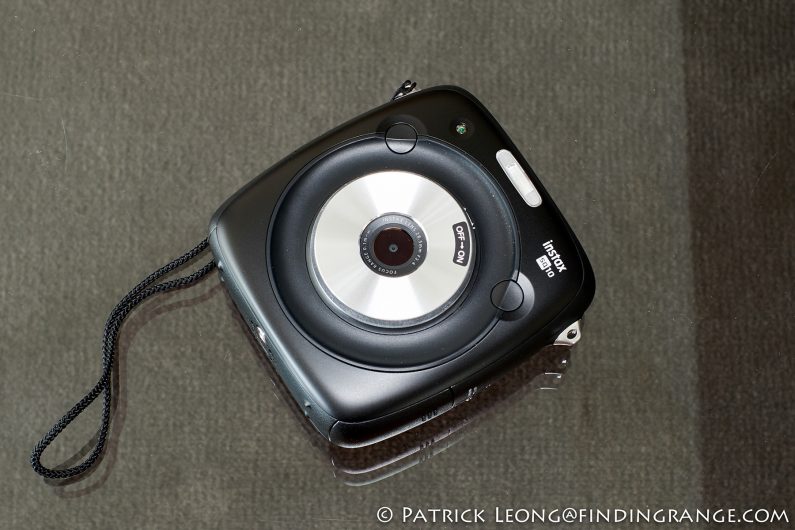
↑ The Fujifilm Instax SQUARE SQ10.
As for overall design, it has a square shape. I do find it a bit awkward to hold, and a little slippery. There’s a little rubber ring around the lens where your fingers can get some grip but you know what would be nice? Maybe a rubberize area for where your palms rest on the camera. The SQ10 measures at 119 mm x 47 mm x 127 mm, so you would think there’s plenty of real estate to get a secure hold but the way the sides of the camera are contoured, made me feel like there isn’t enough area to hold. This is me of course, and other’s may have different experiences. Plus, with all that said, no instant camera that I’ve used so far feels all that comfortable to me but I would say the Leica Sofort, with it’s sharper edges, actually feels more secure in my hands. With the SQ10, I always make sure I have the supplied wrist strap wrapped around my wrist.
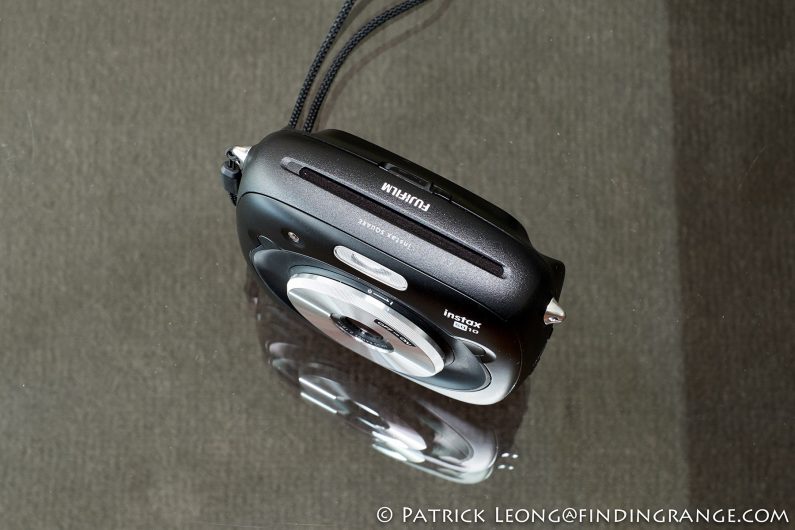
↑ The film comes out from the top of the SQ10.
Moving on, the rest of the Fuji Instax SQUARE SQ10 is pretty simplistic, and straightforward in terms of design. To activate it, you simply turn the metal ring where the lens is located. There is a flash and AF assist light. Another great feature is the dual shutter buttons. Depending on what is most comfortable for you, you can choose to use either left, right or both buttons as a shutter release or you can use one, and set the other one to change from Normal, Bulb, and Double Exposure modes. Moreover, there is a tripod socket, and of course, a battery compartment. The rechargeable battery is good for approximately 160 shots.

↑ The battery compartment.
If you want to store more photos than the internal memory allows, there is a compartment for a micro SD card. The internal memory can store up to 50 photos by the way. It’s worth noting that you can also put jpegs that you took with other cameras on the memory card, and use the SQ10 to print them. I think this is a cool feature; in this way, it has a lot of similarities to the Fujifilm Instax SHARE SP-2 Printer, which I reviewed previously.
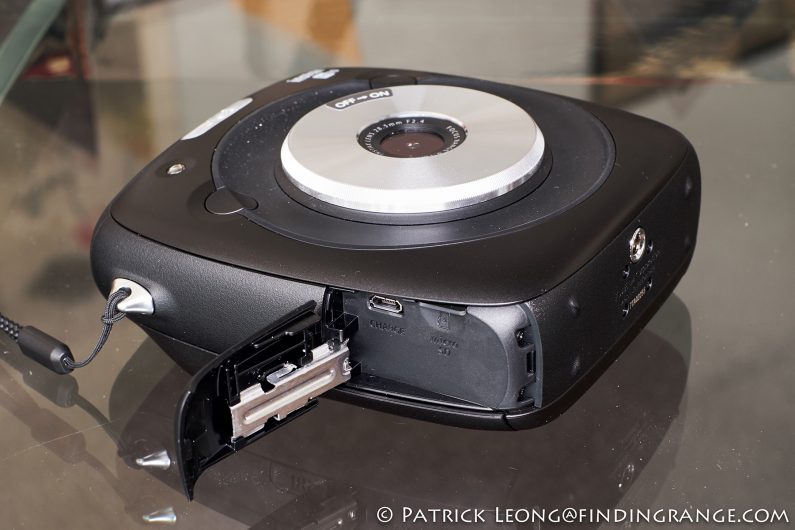
↑ The charging port and the micro SD slot.
Am I missing anything else? Oh, I almost forgot: there is a switch on the side that allows you to switch from Auto to Manual mode. All this means is that if you’re in Manual mode, you can choose what images you want to print as opposed to in Auto mode where the SQ10 prints every image that you take automatically.
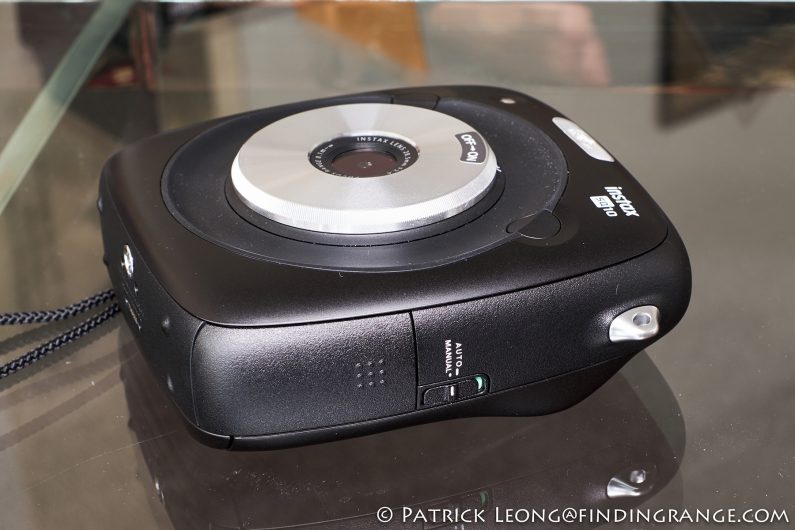
↑ The Auto/Manual switch.
As for the digital portion of the Fuji Instax SQUARE SQ10, there is a 3 inch 460k-dots LCD monitor on the back. Below the screen are the command dial buttons, which allow you to perform all the operations for editing, and printing. Electronics wise, things can feel a little sluggish sometimes but then again, I think it is perfectly fine for this type of camera.
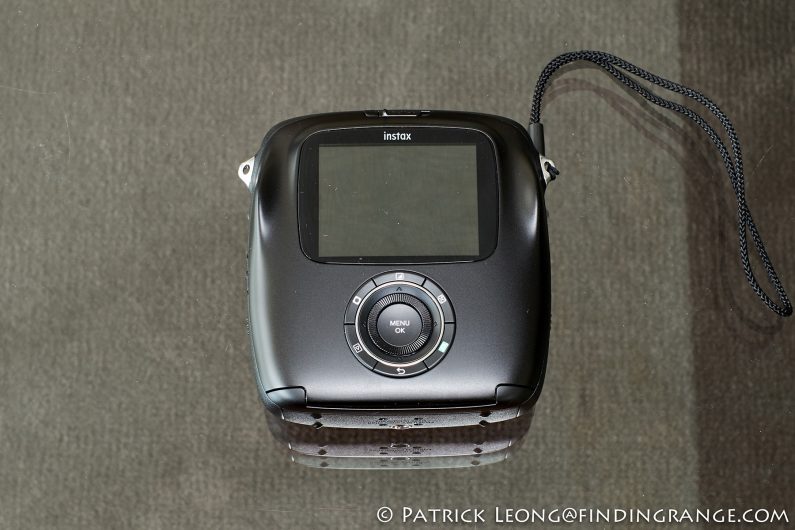
↑ The back of the SQ10.
Fujifilm Instax SQUARE SQ10 Autofocus:
As for the lens, it is a 28.5mm equivalent with a f2.4 aperture. The SQ10 does autofocus, and it can get quite close too, which is very useful for a device like this one. In fact, it can focus as close as 10cm. There is a center AF point, which can not be repositioned but I wasn’t expecting it to be able to considering this is an Instax camera. As for the AF speed, it is decent if the lighting is good. But the autofocus will be slower in lower light levels, sometimes much more depending on how dark it gets.
Fujifilm Instax SQUARE SQ10 Image Quality:
Image quality wise, I don’t think anyone would expect this to compare to even a decent point and shoot. I’m not bashing this little camera in anyway :). It’s just not designed to produce technically perfect image quality, so it’s something that doesn’t even cross my mind when considering an instant camera like the SQ10. But the fact that image quality isn’t perfect is actually part of the charm of instant film. We want the imperfections, and the added character here.


With that said, photos printed are still reasonably sharp with nice color, and contrast. Images are 1920 x 1920, so we’re not talking about a high megapixel champ here but for printing on the Square instax film, it is more than enough.
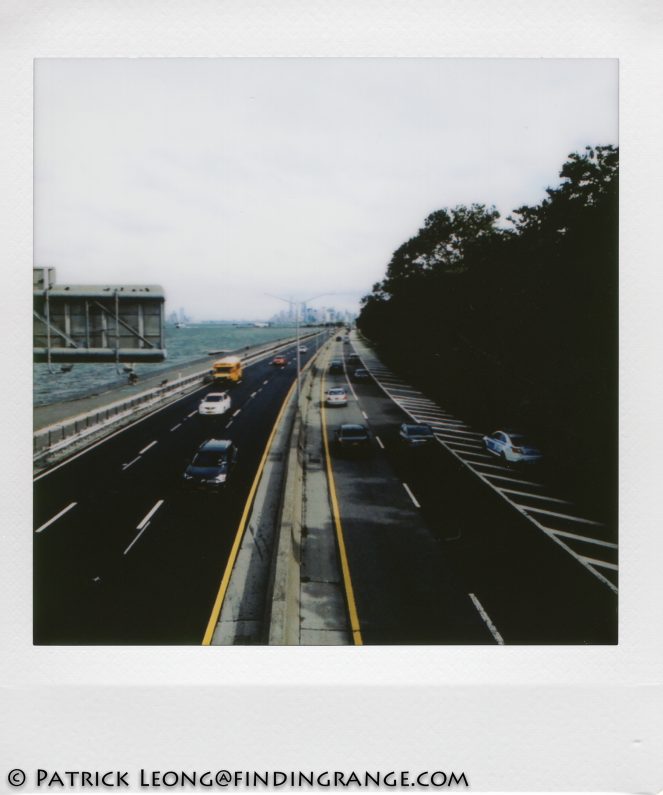
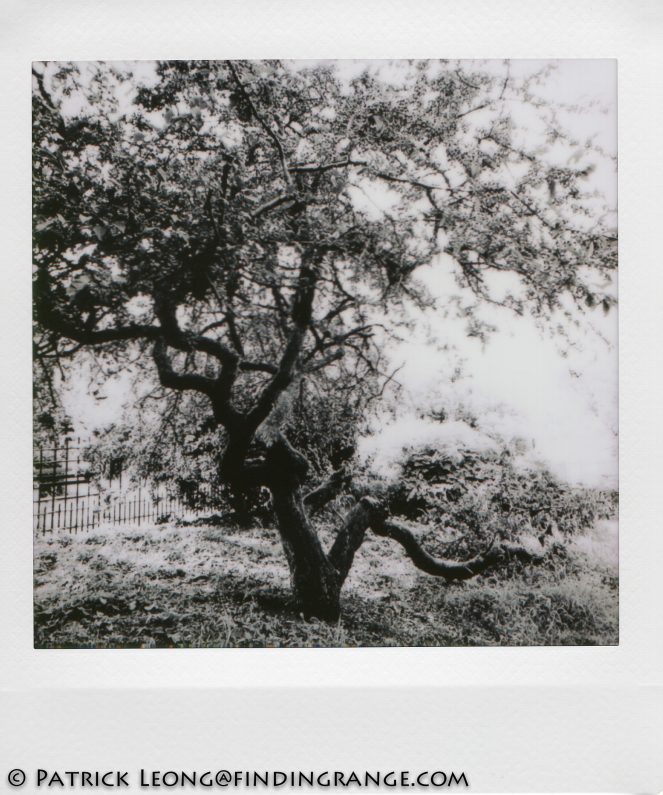
The fun factor is quite important when talking about instant film cameras, and with the ability to view, and edit your images before you print, the Fujifilm Instax SQUARE SQ10 is definitely winning a lot of points for me. In fact, since we’re talking about editing, I should mention that there are 10 different filters that you can use, such as, Cornelius, Monochrome, Luna, Immerse, Amber, Marmalde, Martini, Sepia, Roppongi, and Highline. You can also control the brightness, and vignetting. A digital zoom of up to 2.4x can also be applied to your images.
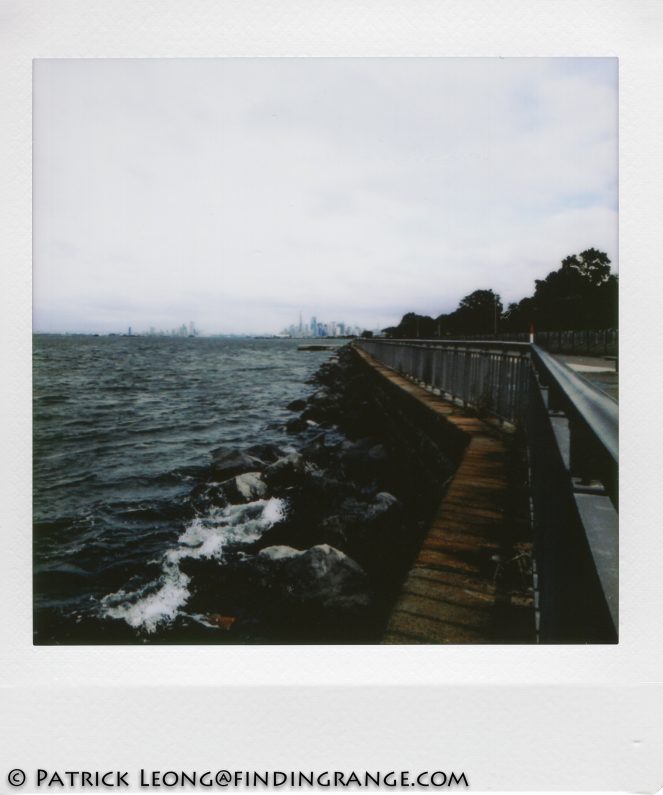

I was using this camera with a bunch of friends, and everyone wanted to try their hand at editing some photos. It’s not even that the editing here is up to Photoshop levels or anything like that. It’s the fact that it’s there in the camera, and it’s easy to use. Then you actually get to see it print. That’s why I think if Fuji had even more editing options, the SQ10 would be even more desirable. Don’t get me wrong, I think what they have here is great but in my opinion, it would be even better with a wider range of editing options.
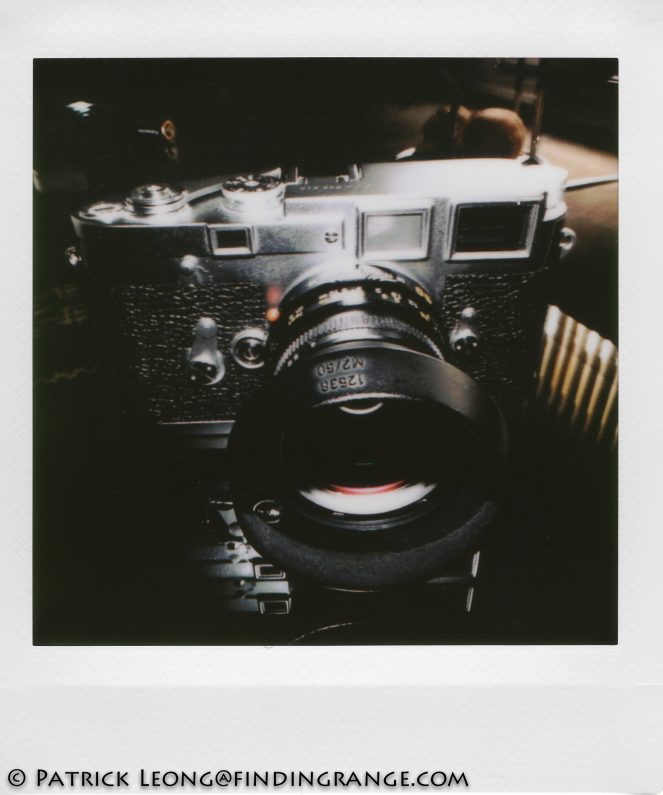

Fujifilm Instax SQUARE SQ10 in Use:
I’ve read some mixed reviews of the Fuji Instax SQUARE SQ10 but I have to say, I actually really like it a lot. I really like the concept. I also think it’s important to remember that we can’t really judge this camera at the same level as say even an entry level DSLR. I just don’t think we can be so hard on it. It’s meant to be a fun, easy-going camera for even a casual user that is convenient, and easy to use. This is just my two cents.

↑ This was actually taken with my Leica SL. I think it’s really cool that you can print from another camera’s jpeg.
I don’t own an instant camera but I’ve been tempted. The thing that stops me is that in the end, the cost of film just adds up, and while I wouldn’t mind so much if I knew most of my photos would come out favorably, it kind of sucks if let’s say half or even more than half of my photos are just lousy. The SQ10 solves this problem for me.
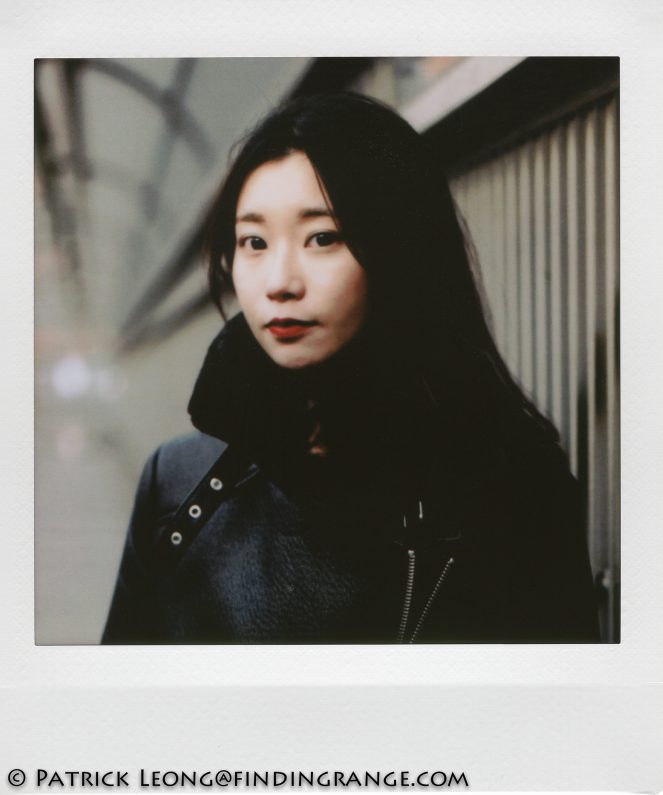
↑ Here’s another from my SL.
In terms of price, the SQ10 retails at about $240 give or take, which is more expensive than other Instax cameras. The film is also about $14 for 10 frames, which costs more than say a 20 pack of Instax Mini (retails around $12.49). But who knows; bulk packs for the square shaped film may be offered in the future like with other Instax film, which will likely bring prices down. Also, at least for me, I know for a fact that I would use considerably less film with the SQ10. Take for example, when I was reviewing the Leica Sofort. I was blowing through film like crazy but with the SQ10, I’ve used considerably less.
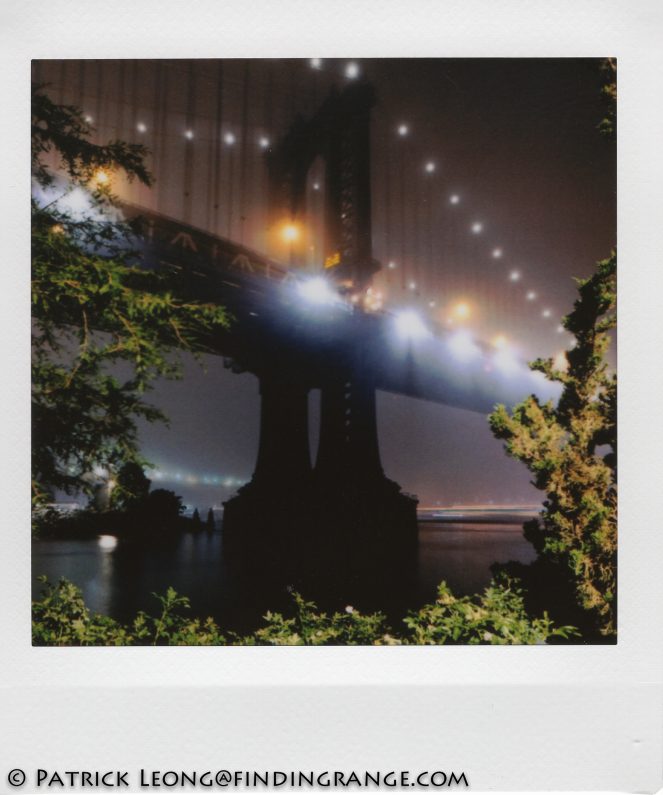
↑ Here’s one from my Fuji X-T2
Having the ability to choose what photos you want to print, and edit in camera, is a great feature to have in something like this. I really believe so. You may lose a little of the charm that instant cameras offer because you take away some of the surprise. With something like the Sofort, you’re not really sure what you’ll get until after the photo is printed. But to me, I think the SQ10 is worth it because you can get a better quality print that still retains most of the charms that Instax offers. Just because you can see the photo before you print it, it doesn’t mean you’ll get a technically perfect print. You’ll still get a photo with plenty of imperfections, and surprises, so you’ll still get something with the charm that is often associated with instant film. However, you’ll also save a bunch of money in the long run because you won’t have to print every single photo you take.
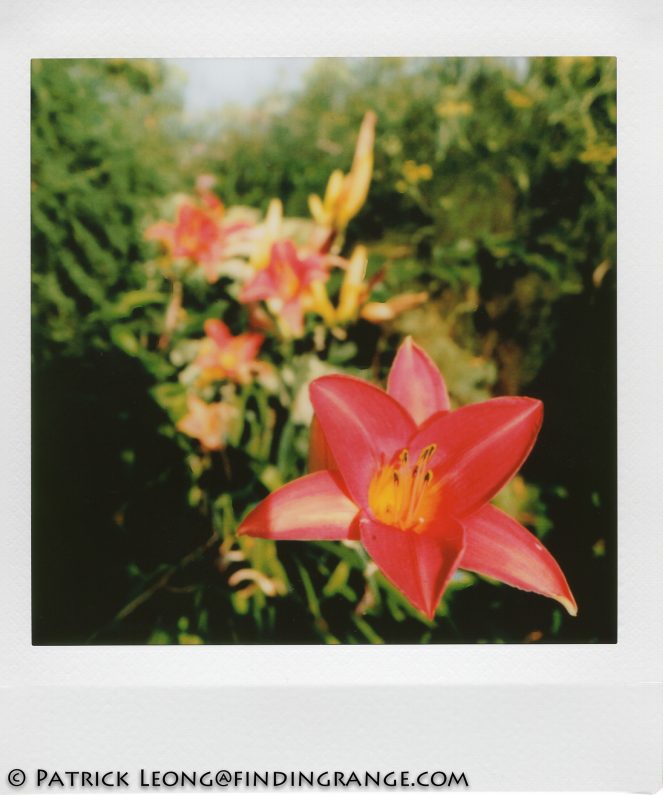
↑ Here’s one more from my X-T2.
I should also add two more points. The fact that I don’t need to print every photo I take means that even when I’m out of film, I can still use the camera, and print the photos at a later date. This actually happened to me the other day. Also, the Fujifilm Instax SQUARE SQ10 is a great camera to take out with friends to a bar or a party. It’s great to be able to print duplicate photos to pass out to all your friends.
I really think that this is a great first attempt by Fujifilm to create a “hybrid” instant film camera. With that said, is there anything I maybe would like to see in the second generation? A wireless connection might be nice. It really makes sense for a camera like this, and it would make it a lot easier to post on social networks sites like Instagram.
Fujifilm Instax SQUARE SQ10 Verdict:
Overall, I think the Fujifilm Instax SQUARE SQ10 is a great addition to the Instax family. I genuinely like this concept of a “hybrid” instant film camera, and I think Fuji did a good job combining digital and analog in the SQ10.

↑ The SQ10 is definitely a fun camera to use.
The SQ10 is still an Instax camera at heart. It still shoots like other Instax cameras: it’s quite easy to use, and simplistic in terms of functions. You’re still getting the flaws, and imperfections that are considered features in the instant film world, and most importantly, you’re still getting the satisfaction that comes with watching a tangible print slowly develop in your eyes.
In addition though, you’re getting a little more control from the digital part of the camera. Yes, the quality of the digital photo may not be up to par to a decent point and shoot’s or even a smartphone’s these days but that’s perfectly okay in this case because this is an instant film camera. Were not after technically perfect photos here. What’s important about the digital part of the camera is that it allows you to customize the photos a bit more, and you can be selective in terms of what you want to print. I also really like the square frames :). Lastly, what is most important is that the fun factor is still here. In fact, I find the SQ10 more fun to use than other instant cameras that I’ve tried.
Is the SQ10 for everyone? Maybe not but then again, there is no such thing as a camera that is perfect for everyone. For those who want something that is just fun, spontaneous, and surprising, a regular instant camera may be all that is needed. A regular instant camera may even be cheaper initially but for some who want a little more control, and the ability to be more selective as to what is printed, and therefore, maybe even end up saving more money in the end, the SQ10 is a fantastic option. I really believe Fujifilm produced something here that is not only a great addition to the Instax family, it is quite unique in the instant film world. I’m sure many will enjoy it as much as I did.
Thanks for taking the time to read my review! If you’re considering purchasing the an SQ10, and my review helped you decide, please help support this site by purchasing from any of the links in this review. It will not cost you anything extra. Thank you for your support!

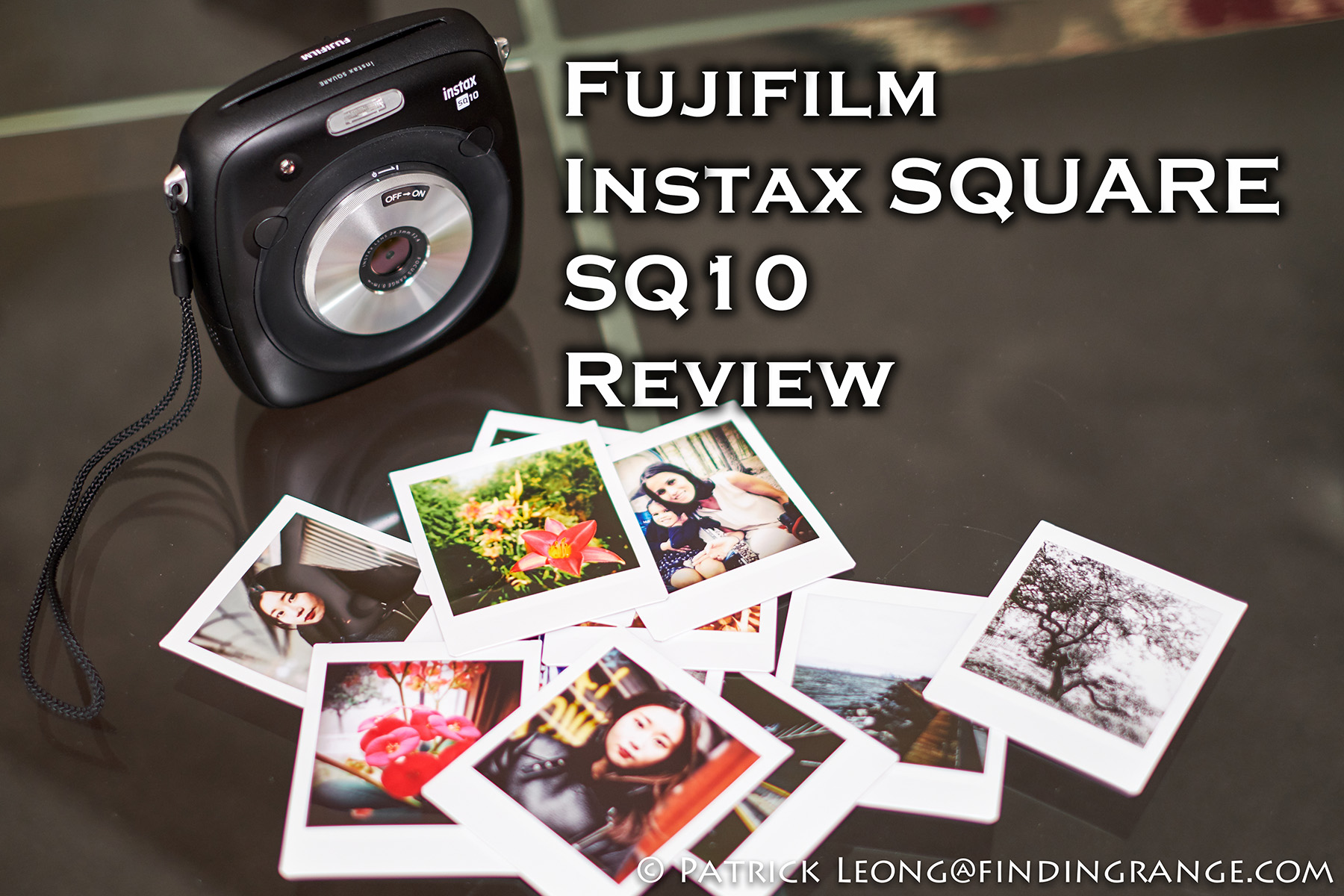
Very nice extensive review Patrick! I’m really tempted, I still use my SP-2 a lot but I’m a square aspect photographer hehe, and this thing is both camera and a printer!
Dane
Thanks Dane!
Much appreciate you taking the time to read it! If I were to go Instax, this would be it. I love the square format, and most importantly, I really was using a lot less film haha. What was really cool was there was a day that I ran out of film. So, I ordered some but I was still able to go out and shoot!
The SP-2 is great though. It links up with the Fuji camera so easily. A wireless connection would be so nice on the SQ10. Imagine if we could wirelessly connect to the Fuji cameras? With the SQ10, I had to transfer images to a micro SD card, and then put them in the camera. Still, at least the option to use the SQ10 as a printer for other cameras’ jpegs is there, right :)?
Best,
Patrick
Hi, Patrick!
Thank you for the review. I’m thinking that using one of these at my wedding reception in a few weeks would be a lot of fun – I told myself I wasn’t going to bring a camera, but this could be a quirky and creative way for me to document things. Being able to save, edit and print only on demand including reprints makes it much more versatile than my Instax Mini 90.
If only B&W film was available now…
Hi Ken!
Thanks for taking the time to read it! Yes, and the best part is you can print multiples of the same image if you need to share with a bunch of people. There is no black and white film yet but you can convert any image into black and white in the camera, and it’ll print in B&W. It’ll print in sepia too. So in that way, it can be more convenient because let’s say you have a color pack film in the SQ10; you won’t have to wait until you finish the pack to switch to B&W and vice versa :). Thanks for stopping by!
Best,
Patrick
Hi Patrick,
Nice review, I like the idea and also the fact that it takes whats good about instant – the fun, the spontaneity etc and combines it with the practicalities of digital so you don’t end up wasting lots of film. I did toy with the idea of getting an old Polaroid SX-70 but the results with modern day film are just too random and expensive. The only thing that I would like on the instax product line would be a more professional version – imagine getting those beautiful shallow depth of field shots with a built in f1.8 lens!
Hi Pete,
Apologies for the late reply, and thanks for taking the time to read it! I don’t shoot instant film all the time but from what I’ve experienced, you can go through quite a bit of it lol, so I am definitely a fan of something like this camera. A more professional one would be really nice! Back in the film days, they used to make them. They also used to make polaroid back for some of those medium format cameras. I think it would be really cool, and I’d probably shell out some cash for one :). I appreciate you taking the time to stop by, and leave a comment!
Best,
Patrick